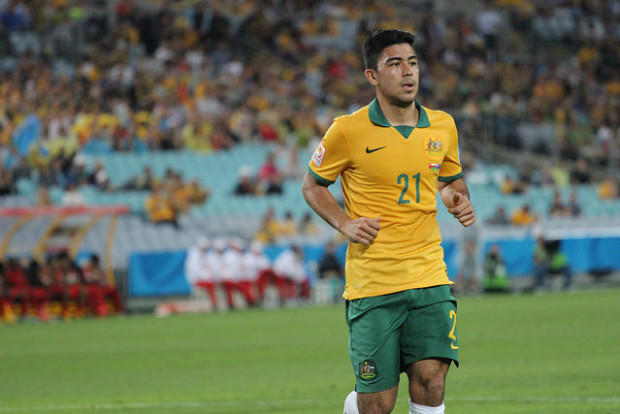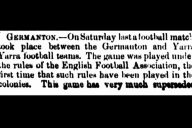A is for Ange Postecoglou and his uncompromising idealism
“Australia’s first ever Asian Cup triumph,” is the type of recent phrase routinely not attributed to the Matildas’ 2010 victory.
Yet five years later, Australia’s men repeat their female counterparts’ feat — Australia’s second ever Asian Cup triumph — and we finally have some major silverware to cheer about. It comes after decades of agony, more recently perpetuated by the likes of Peter Hore, Fabio Grosso and David Carney at left back.
Yes, a number of factors fell Australia’s way throughout the tournament. UAE did the Socceroos a favour by knocking out Japan. Likewise, Ben Williams, by knocking out Iran. Maybe the Asian confederation’s standard isn’t as strong as it previously has been. Would the Socceroos have won previous Asian Cup editions with only one English Premier League mainstay and a handful of A-League, 2. Bundesliga and League 1 players in the team? Maybe not. Would a different manager have fared better than Ange Postecoglou at overhauling and overseeing a squad in transition? Probably not.
Every man and his dog — including yours truly — questioned Postecoglou at every turn. Why experiment with so many players in friendlies and not try to settle on an XI? Why insist on tiki-taka when we don’t have players capable of it? Why does Matt McKay get a game? Why doesn’t Mitch Langerak? Are players really being selected on club form? Should Ange be sacked after a quarter-final loss to China? Do we play with a trequartista or regista? Should Julie Bishop or Malcolm Turnbull replace Tony Abbott? Is spontaneous human combustion real?
But Ange stuck to his guns, instilled belief in the squad and produced a team of overachievers. Mat Ryan delivered as first choice goalkeeper despite seemingly being overawed at the World Cup. Massimo Luongo shone in midfield despite a nervous opening to the Kuwait game. Trent Sainsbury and Matt Spiranovic forged a formidable partnership at the back. Australia didn’t solely depend on Tim Cahill for goals.
All was well that ended well.
S is for Stadia, both sensational and shit
When I was a child my family went fishing at a friend’s farm in Moe in Gippsland as it had a river flowing through it. Fishing wasn’t exactly my thing, so I’d always equip myself with some sort of round ball to stay occupied. I’d have to contend with trails of cow’s hooves in the bumpy paddock, along with obstacles of cow dung and the occasional cow skull.
By all accounts, Brisbane’s Lang Park is all that PLUS bonus security goons to make the experience for player and fan alike as inconvenient as possible. This is the way they dealt with a national replica jerseys “crisis” in the stands.
.@afcasiancup @suncorpstadium Absolute idiocy trying to get Muslim women to remove their shirts when they only have those shirts
— Broke Ben Clark (@scouse_roar) January 14, 2015
Furthermore, I’m also not always into ’boutique’ things, such as boutique beers, which I find too hoppy. But I do enjoy a good boutique football ground, a tightly-packed venue filled to the brim, echoing noise. The kind of stadium where even 10,000 people can generate the atmosphere of 50,000. At Melbourne Rectangular Stadium, not quite 17,000 Iranian fans made the loudest roar I’ve ever heard at a game. I also liked the look and sounds of Canberra stadium, which could one day become a neat venue for an A-League club. I know I’m about to dung on Lang Park again, but imagine if Brisbane had a nice boutique stadium that was attended close to capacity every time, with a decent pitch and sensible security! One can dream.
Just clone Melbourne Rectangular Stadium and plonk one in every state.
I is for Interest, or is that Indifference?
I’ve seen live YouTube streams of state league teams in the FFA Cup. I’ve received Snapchat videos of live goals from kicks in the park. But I couldn’t watch my national team — or any national team for that matter — in the Asian Cup’s group stages live unless I had subscription TV.
To summarise. Our National Team was hosting a Continental Competition of the World Game. But the group stage clashes were all delayed on free-to-air. In Melbourne, even live public venues like Federation Square didn’t bother broadcasting the knockout stages, preferring to show Australian Open tennis to a few people — but more seagulls.
It was symptomatic of a missed opportunity to fully engage the general public with Asia’s premier football tournament.
Right from the opening ceremony, when fans in Melbourne booed Tony Abbott — his welcome letter did not help matters — but warmly applauded Kuwaiti politician and president of Olympic Council of Asia Ahmad Al-Fahad Al-Ahmed Al-Sabah, the Asian Cup was a hotbed for compelling human interest and political stories. Yet one game into the competition and audiences were already subject to an article by an ex-AFL player grumbling about the restricted view…from the restricted view seats.
To their credit, many writers did cover the tournament with distinction. Although if you looked in the news section of some of our newspapers you would’ve got the impression that the tournament was just a figment of our imagination.
But time will tell if a new wave of converts, outside the usual crowd of diehards who were so absorbed by the tournament, will emerge. Maybe there would have been more if they were treated to the full spectacle of the entire tournament.
A is for Acknowledgement of a world-class sporting event
Sepp Blatter channels Machiavelli to Les Murray:
“I am convinced that Australia could and should organise the World Cup but it was not easy, they were candidates for the 2022 World Cup but the opposition was a very big opposition and they passed at the last place.
“This should not mean that they should not come back and try again because if you never take a risk you will never have a chance, but if you take a risk you also have a chance to lose.”
The 2015 Asian Cup was the footballing equivalent of Juan Antonio Samaranch’s “best Olympic Games ever verdict” after Sydney 2000. The only downside being that only eastern Australia got to have all the fun. It wasn’t fair.
In Melbourne, government lobbyists took the Eddie McGuire ‘lemon’ claim too seriously and the “sporting capital” missed out on a semi-final. Yet in the end, 650,000 fans flocked to the games and 800 million watched the final, squeezing out the sweetest of lemonades. There were plenty of goals, colour and noise (though not always from Australian supporters).
Fans of nations from regions so often divided were able to unite over a sport that also paradoxically divides people in the host country.
So ends almost a month of a captivating tournament that exceeded most people’s expectations. We’ll return to our normal lives. In the office, lifelong AFL fan Greg mentions in passing how good the final was, and how sweet Maximo Longo’s strike was. Maybe in years past he wouldn’t have cared at all. And maybe in the future he’ll care just a bit more.
And I’ll continue to daydream about Melbourne Rectangular Stadium. That delicious chicken salt on chips and full strength Kirin on tap during the Cup to fill my arteries as football filled my eyes and crowds filled my ear. Take me back.
Photo of Massimo Luongo courtesy of Nasya Bahfen.
















